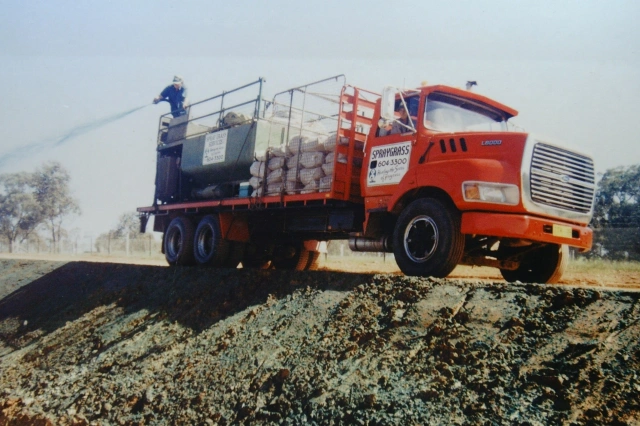June 2nd 2022
A Myth, Fantasy or Fair Dinkum.
The Hydroseeding/Hydromulching technique was first invented in the USA in 1953.
Suffice to say that there was a reason for its introduction and that was to establish vegetation on slope areas where conventional seeding operations could not be carried out. Further, through hand broadcasting of seed would in most cases be possible there was no protection of the seed from winds, storms, birds, ants and other natural predators.
So 80 years later there is a misunderstanding of what Hydroseeding/Hydromulching is all about. To begin with the term Hydroseeding is used exclusively in the USA and Europe to mean Hydromulching. Hydromulching in our definition means the mixing of process materials and seed in a Hydromulching tank and with agitation the slurry is mixed and sprayed onto the surface to be revegetated. Hydroseeding in Australia means the addition of seed, fertilizer and water only to be sprayed onto the surface to be revegetated.
The use of the word myth meaning a “widely held but false belief or idea” is something that students applicators or specification writers are privy too since in most cases they do not understand what makes the Hydromulching operation work. Hydromulching does not occupy a significant chapter in the University courses for Engineers or other areas where students need to be taught about revegetation techniques.
Fantasy relates to the “formation of mental images especially wondrous or strange fantasies”
Hydromulching is sometimes mistaken as the way to solve all revegetation problems just by its application. It does not provide a “magic potion”.
The “Fair Dinkum” tag refers to the carrying out of the Hydromulch application knowing that all the factors that make for successful hydromulch application have been put in place.
Failures are not necessarily the result of the Hydromulching operation but because of the failure to adhere to the specification like all agricultural purposes weather plays a major role in the success of the application. One other area that is of great concern is the undercutting and “dutch auctions” conducted by clients to get the best price which ultimately leads to a “cutting of corners” which reduces the ultimate effectiveness of the specification and can only result in failure.
